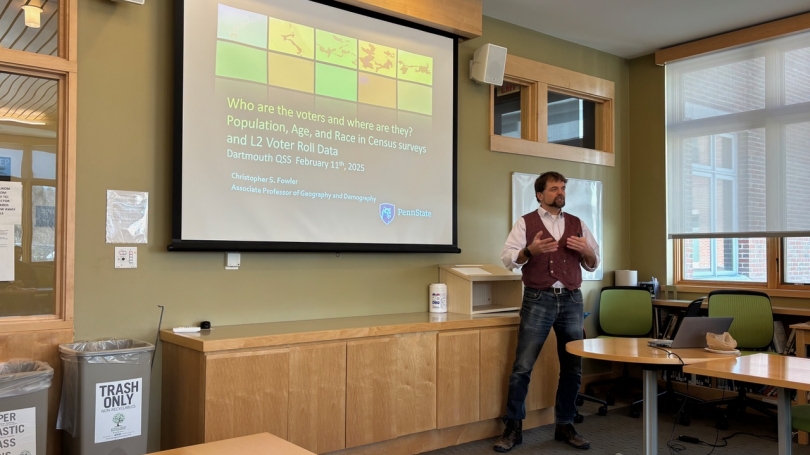
- Undergraduate
- Research
- About the Program
- News & Events
- People
Back to Top Nav
Back to Top Nav
Back to Top Nav
Back to Top Nav
The Program in Quantitative Social Science hosted a colloquium with Associate Professor Chris Fowler from Penn State University on February 11, 2025. Professor Fowler is a member of the Class of 1997 at Dartmouth, who majored in Geography. While at Dartmouth, Professor Fowler wrote an honors thesis, "The expansion of the Hudson's Bay fur trade 1763 to 1821," and his advisor was Professor of Geography Richard Wright, who recently retired from Dartmouth. The title of Professor Fowler's talk was, "What we know and don't know about eligible and registered voters in the U.S.: Population, Age, and Race in Census surveys and L2 Voter Roll Data."
Abstract: A broad range of scholarship and policy depends on information about the population that is eligible to vote and the population that is registered to vote. From enforcement of the Voting Rights Act to journalism about turnout in a local election, our knowledge of voting and representation relies on a clear understanding of eligibility and registration. Despite this clear need, there are distinct areas of uncertainty and difference associated with these data that stem from variations in how the data are collected and for what purpose. In this paper we compare the important differences among a range of federal data sources on citizenship and voter registration and also consider data on registration from aggregated state voter rolls from a private vendor (L2). Our first objective is to provide a clear understanding of the comparative strengths and weaknesses of key data products for users who may not be well versed in their differences. In elaborating these differences we demonstrate the need for care in making claims about differences in eligible voter preferences for registration or the impact of policies meant to increase registration. Ultimately, we recommend analyses based on multiple data sources. We also find a distinct need to better understand local differences in how registration lists are maintained so that other sources of uncertainty in the data can be more